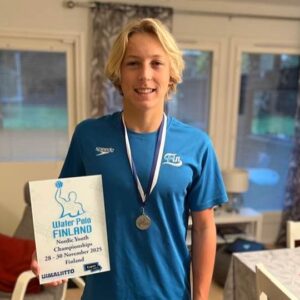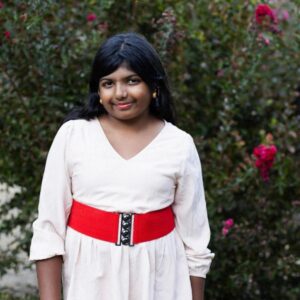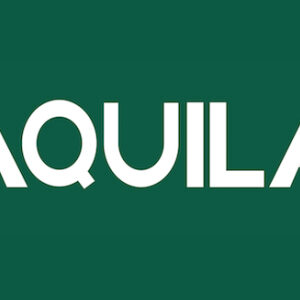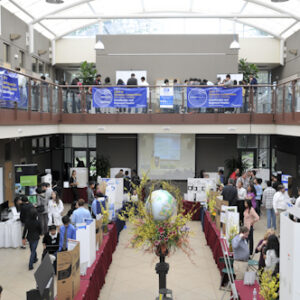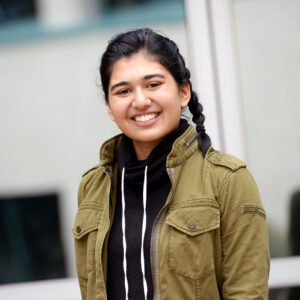More than 400 attendees arrived to experience the 2012 Harker Research Symposium on April 28, which featured some of the most fascinating speakers and presentations in the symposium’s six-year history.
Legendary entrepreneur Vinod Khosla was this year’s morning keynote speaker. “We were very fortunate that someone of Mr. Khosla’s stature would take time from a busy schedule and from a beautiful Saturday to come and share his thoughts with our students,” said science department chair and symposium coordinator Anita Chetty. “I think that what he had to say certainly got us all thinking about the present as well as the future.”
Giving a joint presentation were John West and Atul Butte. West, a Harker parent and CEO of genome analysis company Personalis, was joined by Butte via video conference from Boston. West and Butte, chief of the division of systems medicine and associate professor of pediatrics, medicine and by courtesy, computer science at Stanford University, discussed the collaborative project between a team of Stanford scientists led by Butte and West’s former company, Illumina, to sequence the West family’s DNA. This in turn led to an effort to develop software that would make genome sequencing accessible to more people.
This year’s alumni presentation was given by Jacob Bongers ’07, son of Harker art department chair Jaap Bongers and a 2011 graduate from the University of Southern California. Bongers discussed his passion for archaeology and his related field work and research, which led him to being published in the Journal of Archaeological Science while still an undergraduate. “Archaeology has been a passion of mine since I was a kid and since I have a tremendous amount of experience performing field work and conducting research within the scope of archaeology, I felt like I had a lot offer to anyone interested in learning about this fascinating field of study,” Bongers said. “I also wanted to talk about a field of study that, at Harker, may not get as much press as engineering, biology or medical research.”
Attendance remained high for the duration of the event, and the high caliber of this year’s student presentations kept visitors highly interested. “Every classroom was standing-room only,” Chetty said.
One presenter at this year’s symposium, Alex Najibi, grade 12, said attending last year’s symposium provided the spark for his own interest in research. “I’ve always been interested in science and research, but when I went to the symposium last year, not as a presenter, I was really amazed by how many projects the other students were doing,” he said.
Although he was not sure at first that many people would find his presentation on particle physics engaging or accessible enough, he quickly discovered that his audience found the topic quite compelling. “Particle physics isn’t really the most accessible topic, but I was pleasantly surprised at how quickly nearly everyone understood what I was discussing,” he said.
Because of the expected high attendance, the symposium this year was arranged to create better foot traffic, and a tent was set up between Nichols Hall and Dobbins Hall to display the many impressive poster presentations by upper school students. The Dobbins Hall gallery was set aside for middle school student poster presentations.
Exhibitors occupied the atrium at Nichols Hall, demonstrating many scientific and technological advancements and offering a peek into the kinds of careers that are open to students interested in scientific research. This year’s exhibitors were Microsoft, Hewlett-Packard, The Triple Helix, East Bay Cardiovascular and Thoracic Associates, Lumoback, Symmetricom, Twincreeks Technologies, Nvidia, Autodesk, Ericsson, Hunter Laboratories and Rector Porsche Audi.
“The industry piece is very important because it allows our students to see the connection between research and career, research and the economy of our valley,” Chetty said. “The exhibitors were so excited about their companies and their products and their research and development. That enthusiasm was really infectious.”
In addition to the student clubs such as WiSTEM (Women in Science, Technology, Engineering and Mathematics) and the chemistry club, who were instrumental organizing this year’s event, Chetty was also thankful for the various departments that came together to make sure the Harker Research Symposium had another successful year.
“The symposium recognizes what our teachers and our students do throughout the year, and it’s a celebration of that work,” she said. “But the actual event also brings together the other departments that make our school run: facilities, technology, Office of Communication, the kitchen, the security, all of those departments come together to run this huge event.”

